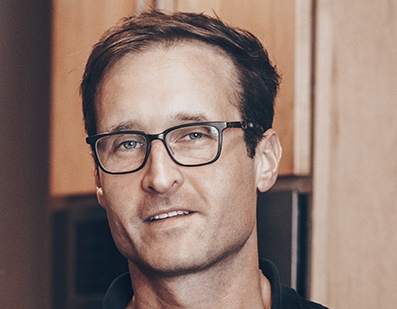

Deep Dive: Edible alchemy
Once reserved for feed, single-cell proteins are being transformed into food through science, strategy, and innovation. Benjamin Reygate finds out where the magic is happening – and what it takes to bring it to the table
It starts in the feedlot – silent, microscopic, and invisible to the naked eye. Now, it is angling for a seat at your dinner table. Single-cell proteins (SCPs), long relegated to animal feed, are being recast as next-generation ingredients for human nutrition in a shift driven as much by necessity as by science. As global appetites grow, the pressure to find sustainable, nutrient-rich alternatives to conventional protein has never been more urgent.

In many ways, SCPs are far from novel though. Fermented foods, rich in microbial biomass, have nourished humans for millennia – and have long been linked to positive health outcomes. Nutritional yeast, for example, has been a dietary staple for centuries, while live bacteria biomass in the form of probiotics continues to play an essential role in gut health. Indeed, our very own microbiomes thrive on bacteria, producing postbiotics – those inanimate microbial components that, according to the International Scientific Association for Probiotics and Prebiotics (ISAPP), confer health benefits on the host. In essence, we have been ‘eating’ microbes all along.
Rewriting the system
This is not merely about supplementing diets – it is about reengineering the food system from the microbial level upward. Behind the pivot lies a complex set of drivers: environmental degradation, resource scarcity, and the biochemical reality that microbes can often do in hours what livestock take weeks to accomplish. Single-cell proteins have quietly powered aquaculture and livestock production for decades. Now, with technical advances in fermentation, purification, and metabolic engineering, they are emerging as credible contenders for the human plate.
“By 2050, food production will need to rise significantly, but conventional proteins will not be able to meet global demand due to resource constraints and sustainability challenges. That is why we need alternative protein sources to bridge this gap,” explains Eleni Ntokou, Director of New Product Development, Sustainability & Regulatory Affairs at Unibio.
Her assessment is backed by data. The Good Food Institute estimates that the novel ingredients category – including SCPs, precision fermentation proteins, and cultivated meat – could balloon from a US$29 billion market in 2023 to over US$1.1 trillion by mid-century. That trajectory reflects a deeper reckoning: animal agriculture, while entrenched, is increasingly seen as environmentally unsustainable. The land, water, and carbon costs of raising livestock at scale are pushing the boundaries of planetary tolerance.

Against this backdrop, SCPs represent a fundamentally different operating model. Instead of growing animals to produce protein, we can cultivate microorganisms – yeasts, bacteria, fungi – that convert simple carbon sources such as methane, CO₂, or sugars into dense, protein-rich biomass. It is biology stripped to its essentials: efficient, scalable, and largely decoupled from farmland.
Unibio is among the companies leading this charge, leveraging a natural process and engineering it for industrial scale. “In essence, nature already turns methane into protein – Unibio has simply industrialized this natural process,” Ntokou explains. The company’s platform centers on methanotrophs – microbes that consume methane – and a proprietary vertical loop bioreactor designed to maximize the efficiency of that conversion.
“It’s designed to maximize the transfer of gases into the liquid phase, where they become available to the microbes… this reactor design gives us high productivity and excellent raw material utilization,” Ntokou adds. The system is closed-loop, efficient, and operates independently of arable land – critical advantages in a food system increasingly strained by climate volatility and geopolitical disruption.
From biomass to bioavailable
The result is ‘Uniprotein’, a microbial biomass with a high-quality amino acid content and a profile well-suited to human diets. “Compared to products such as soy protein concentrate, Uniprotein contains 9% more total amino acids, and 30% more essential and branched-chain amino acids. It also naturally contains high levels of zinc and vitamin B12 – critical nutrients often lacking in plant-based diets,” Ntokou notes.
Yet, nutritional density is only one part of the story. To be suitable for human consumption, microbial proteins must also meet safety thresholds. One challenge is nucleic acid content. Microbes tend to contain high levels of DNA and RNA, which, if not reduced, can cause health issues in humans, particularly related to uric acid buildup. “Microbes naturally contain a relatively high proportion of nucleic acids… Our process reduces those nucleic acids to safe levels, making the protein suitable for human consumption,” Ntokou suggests.
That technical refinement is crucial for elevating SCPs from commodity feed ingredients to viable food components. But it also raises the bar in terms of processing complexity and regulatory oversight. Transitioning from animal feed to human food requires new thinking – not just in engineering, but in compliance, sensory science, and market strategy.
“We need to adapt our technical processes with more advanced purification and fermentation optimization, improve taste and texture, and meet much stricter food
safety and quality control standards,” says Ntokou.

To do that at scale, companies need more than fermentation tanks – they need pilot facilities capable of simulating real-world conditions. “One of the key aspects is mastering the scaleup process – and for that, pilot plants are essential. They’re critical in helping companies develop the right processes and validate them at a meaningful scale,” says Thierry Duvanel, Director of Innovation at Bühler Group. Bühler’s global network of application centers provides startups and mid-stage companies a place to de-risk their tech before committing to commercial infrastructure.
Crossing the approval line
That journey from prototype to production is mirrored in the regulatory sphere, where SCPs must pass some of the most stringent safety assessments in the global food system. “Navigating novel food approvals is complex and varies significantly by region. It can take anywhere from three to five years from submission to approval, and the requirements differ across the European Union, the USA, the UK, and Singapore,” explains Ntokou.
Europe’s novel food regulation is particularly exacting. Companies must generate comprehensive toxicological, nutritional, and compositional data – often requiring extensive pre-clinical work. “The biggest hurdle I see for companies that start in feed and want to move into food is that they’re then required to generate a full data package to support a novel food application,” says Hannah Lester, CEO & Founder of Atova Regulatory Consulting. “In the EU, the requirements are particularly demanding, and the process can take several years. So, my strongest advice is to start preparing for your novel food application as early as possible.”
Unibio’s approach emphasizes early engagement with regulatory agencies. “Our goal is to get their input early, so we can avoid any major missteps that could cost us valuable time – and, of course, money,” says Ntokou. She points to Superbrewed Food’s GRAS status in the USA as a useful case study for other companies seeking market entry. Learning from these journeys, she says, helps sidestep regulatory gridlock.
Still, SCPs won’t succeed on data alone. The ingredient must also win over product developers, formulators, chefs – and, ultimately, consumers. “Perhaps the biggest challenge is how to thrill the consumer,” admits Ntokou. “We need to get consumers to taste and experience the product for themselves – this is a hurdle the entire single-cell protein industry faces.”

That means delivering on more than just nutrition. SCPs need to blend seamlessly into familiar foods – without off-notes, textural oddities, or confusing labels. “If you ask end users – CPG companies or food-service providers – what they want, they’ll often say the same thing: beyond being nutritious, functional, and sustainable, they want an ingredient that’s white and neutral so it can fit seamlessly into a wide range of applications,” states Céline Schiff-Deb, Chief Scientific Officer at MISTA by Givaudan.
But that’s a particularly big ask. “It’s not always easy to achieve with single-cell proteins, because they tend to be whole-cell ingredients and can come with distinct sensory characteristics,” Schiff-Deb continues. Fermentation-derived proteins may have earthy or yeasty notes, and balancing flavor neutrality with biofunctionality
remains a key challenge.
Speaking CPG’s language
That’s where narrative and framing matter. Bryan Tracy, Co-founder & CEO of Superbrewed Food, believes SCPs should be positioned as solutions, not novelties. “What we communicate to CPG customers is that we’re an ingredient that complements their existing portfolio – we’re here to fill gaps where they don’t currently have solutions,” he says.Superbrewed’s ‘postbiotic protein’ branding offers a health-forward entry point for consumers while assuring manufacturers of its stability and performance. For Tracy, success means meeting buyers on ingredient spec sheets – not TED stages.
As science and processing technology have advanced, new players are extending the work of early pioneers such as ICI, Norferm, and DuPont, whose research established microbial proteins in animal and aquaculture feed. Today, companies such as Unibio, KnipBio, Lanzatech, and Kiverdi are building on that legacy, while a new wave – including Superbrewed Food, Air Protein, and Solar Foods – is developing functional, food-grade ingredients from bacterial biomass for direct human consumption.

Strategic partnerships are proving vital to scaling. “Scaling fermentation-based production requires significant capital, and strategic investors with industrial expertise and access to critical inputs like methane are ideal. We’re fortunate to have such a partner,” says Ntokou.
Superbrewed takes a similar approach. “Partnerships are absolutely essential,” says Tracy. “Working with Döhler gives us manufacturing scale. Bel Group helps us understand product development within established food categories. And Fonterra opens up downstream applications and global reach.” Each partner supports a different stage of the value chain – from infrastructure to application to market entry.
MISTA helps orchestrate these ecosystems. “What we do is bring these stakeholders together – we bring together a few startups and a few strategics into an application kitchen, let them explore and prototype, and see what happens. It’s a dynamic, collaborative environment,” Schiff-Deb explains. That space has become a proving ground for next-gen ingredients aiming to move from concept to cuisine.
Still, technical success, sensory appeal, and regulatory progress all hinge on cost. “Cost and scale remain absolutely critical,” says Olivier Hartz, Unibio’s Chief Commercial Officer. “Most CPG companies expect you to bring an ingredient that not only delivers functional benefits but also supports their reformulation efforts and aligns with their existing cost structures.”
That cost competitiveness won’t happen overnight. “Getting to those initial commercial volumes – even if they’re modest – is critical. You need to be able to demonstrate economics that justify purchase commitments and spark interest from the funders who might back a purpose-built facility,” Tracy explains.
For Unibio, low-cost methane access offers a key edge. “We’re building partnerships that enable us to co-locate near methane sources, reducing transport costs and integrating more tightly with existing infrastructure,” says Hartz.
Regulatory literacy also remains critical. “I strongly recommend that companies follow the existing guidance as closely as possible but also take the time to read EFSA's published opinions – they’re incredibly valuable,” continues Lester. “The non-confidential sections of novel food dossiers can be a goldmine of information,” she adds. Pre-submission meetings, especially in the USA and Singapore, can also help streamline approval.

The rise of SCPs – from feedlot inputs to functional food ingredients – isn’t linear. It’s a convergence of science, regulation, sensory design, and supply chain. Success depends not just on making SCPs, but on earning trust, delivering taste, scaling production, and securing market fit.
“‘Taste, taste, taste’ – that’s what matters most,” says Ntokou. Hartz agrees, stressing the value of familiarity. “There’s no novelty here – it’s fermentation, a process we’ve known for nearly 200 years. Consumers already understand it, so the key is making that connection easy and familiar.”
Tracy notes that SCPs must fit into existing habits. “It’s about meeting – and ideally exceeding – consumer expectations in how they already purchase food. Success depends on long-term relevance, not just trends.”
For Schiff-Deb, the tipping point may come with a single breakout product. “Once we see a compelling consumer success story in this space, it will lift the whole category.”
Duvanel brings it back to fundamentals: “Taste, nutrition, and price. But especially price – without scaling to megaton levels. It’s about proving scalability while maintaining a price point that works for food manufacturers and consumers.”
And Lester offers the final reminder. “Without regulatory approval, it doesn’t matter how good it tastes or how affordable it is. That’s the foundation everything else rests on.”
With the right science, regulatory readiness, and consumer appeal, SCPs may finally leave the feedlot behind – and become the protein of the future, made without fields, slaughterhouses, or compromise.
If you have any questions or would like to get in touch with us, please email info@futureofproteinproduction.com







